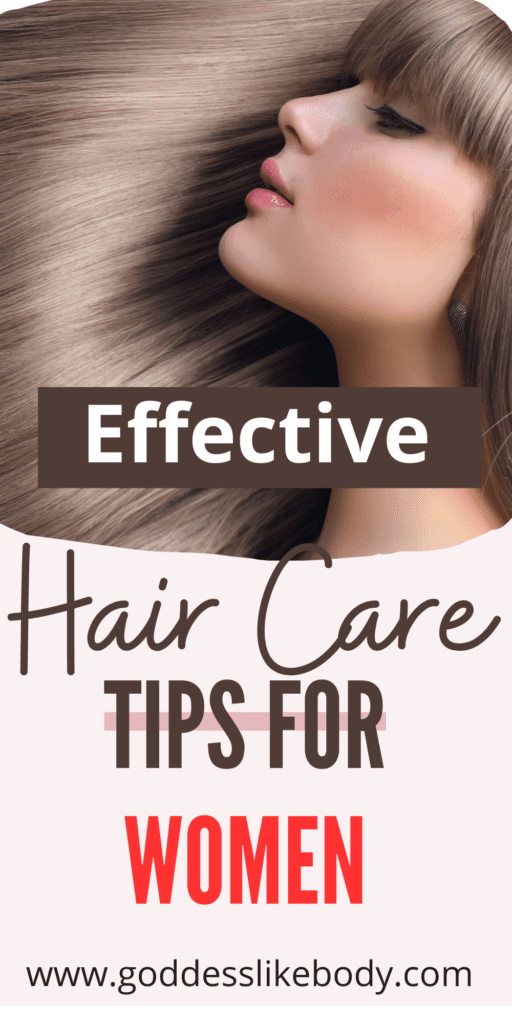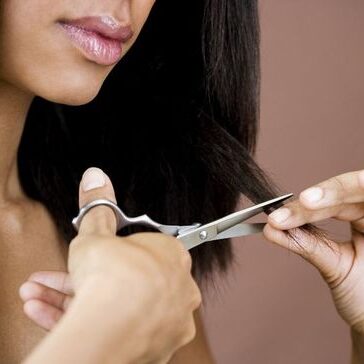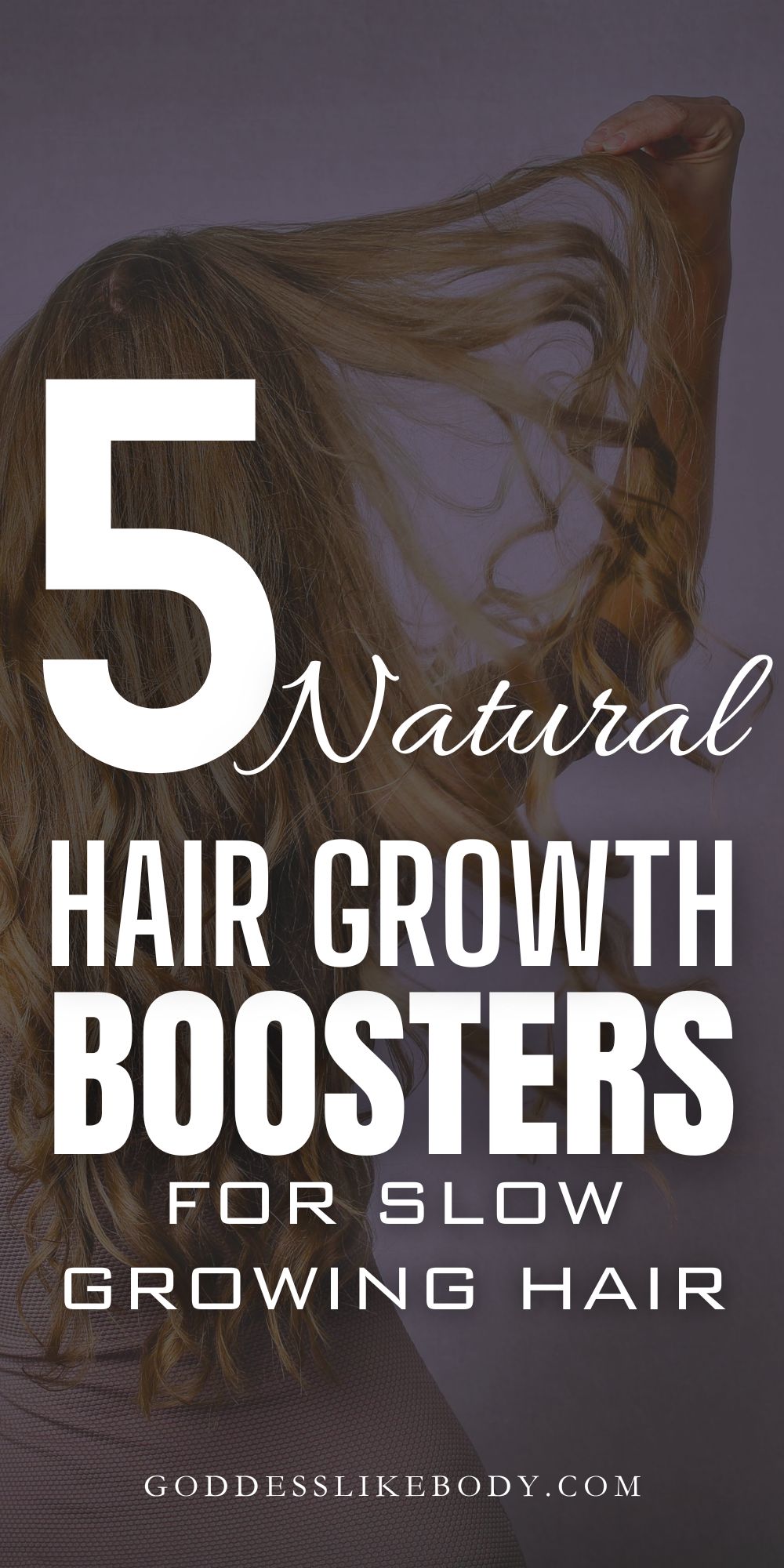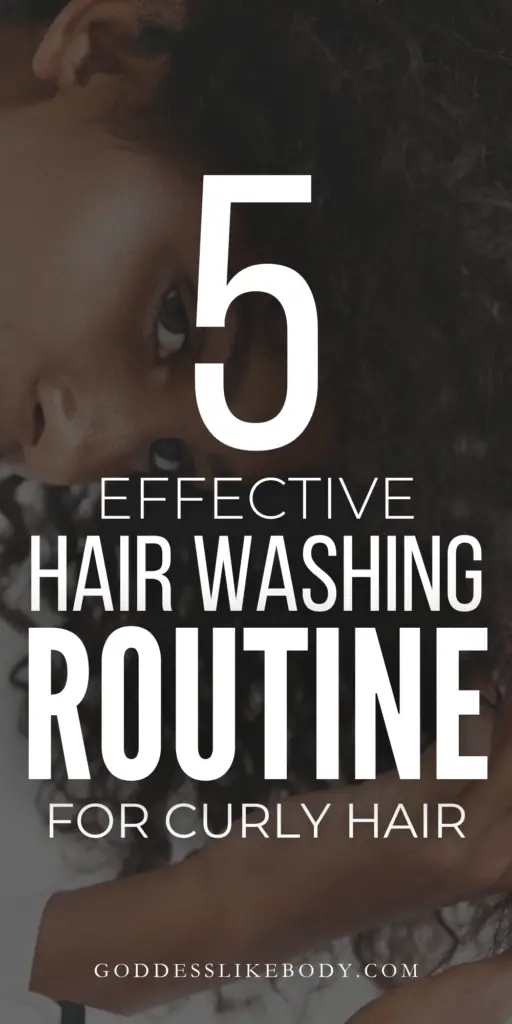Taking care of your hair is essential to maintain its health, strength, and natural beauty. With the right hair care routine and proper techniques, you can ensure that your locks stay luscious and vibrant. In this post, we will discuss expert hair care tips for women that will help you achieve and maintain healthy and gorgeous hair.
Busy? Save this pin for later.
Understand Your Hair Type
Before diving into any hair care routine, it is crucial to identify your hair type. Different hair types require specific care and products. Whether you have straight, wavy, curly, or kinky hair, understanding your hair type will help you choose the right products and techniques to keep it in optimal condition.
How to Identify Your Hair Type:
- Straight Hair: Straight hair is typically smooth and lacks significant volume. It tends to be oily and may appear greasy more quickly than other hair types.
- Wavy Hair: Wavy hair has a slight texture with loose curls or waves. It is prone to frizz and needs extra moisture to maintain its shape.
- Curly Hair: Curly hair has well-defined curls or spirals. It is often dry and requires more hydration to prevent frizz and maintain its shape.
- Kinky Hair: Kinky hair has tight coils or zig-zag patterns. It is the most fragile hair type and requires intense moisture and gentle handling to prevent breakage.
Once you know your hair type, you can tailor your hair care routine accordingly, selecting products that cater to its specific needs.
You Might Also Like : Hair Care Tips For Volume
Regularly Trim Your Hair
Trimming your hair every six to eight weeks is vital to prevent split ends and breakage. Regular trims help maintain the health of your hair, promoting growth and preventing frayed ends. Don’t hesitate to visit a professional hairdresser to get those split ends snipped away!
Benefits of Regular Trims:
- Prevents Split Ends: Split ends can travel up the hair shaft, leading to further damage. Regular trims remove split ends, preventing them from worsening.
- Promotes Hair Growth: Trimming your hair regularly stimulates hair growth by getting rid of damaged and weak ends. This allows your hair to grow longer and healthier.
- Enhances Hair Texture: Regular trims help improve the overall texture of your hair. By removing damaged ends, your hair appears smoother, shinier, and more manageable.
Use a Gentle Shampoo and Conditioner
Choose a shampoo and conditioner that are suitable for your hair type and consider using sulfate-free options. Harsh chemicals found in some shampoos can strip the natural oils from your hair, leaving it dry and brittle. Opt for gentle formulas that nourish your hair while cleansing it effectively.
Tips for Choosing the Right Shampoo and Conditioner:
- Read the Labels: Look for shampoos and conditioners that are specifically formulated for your hair type. This ensures that the products will address your hair’s unique needs.
- Avoid Sulfates: Sulfates can be harsh on the hair and scalp. Opt for sulfate-free options to maintain the natural moisture balance of your hair.
- Look for Nourishing Ingredients: Choose products that contain ingredients like argan oil, shea butter, or coconut oil. These ingredients provide hydration and nourishment to the hair, promoting its health and vitality.
Using a gentle shampoo and conditioner tailored to your hair type will help keep your locks clean, moisturized, and free from damage.
You Might Also Like : Hair Care Tips For Preventing Hair Greasiness Naturally
Avoid Over-Washing Your Hair
Contrary to popular belief, washing your hair every day can actually be detrimental to its health. Excessive washing can strip away the natural oils that keep your hair moisturized, leading to dryness and potential damage. Aim to wash your hair two to three times a week, depending on your hair type and lifestyle.
Benefits of Reducing Hair Washing Frequency:
- Retains Natural Oils: By washing your hair less frequently, you allow the natural oils produced by your scalp to nourish and protect your hair.
- Prevents Dryness: Over-washing can strip away the moisture from your hair, leaving it dry, dull, and prone to breakage. Washing less often helps maintain its natural hydration.
- Reduces Frizz: Washing your hair less frequently can help minimize frizz, as the natural oils act as a natural conditioner, keeping the hair cuticles smooth and moisturized.
By avoiding excessive washing, you can preserve the health and natural balance of your hair.
Protect Your Hair From Heat
Heat styling tools such as flat irons, curling irons, and blow dryers can cause significant damage to your hair if not used properly. Always apply a heat protectant spray or serum before using any heat styling tool. Additionally, try to limit the use of these tools and opt for air-drying or natural styling methods whenever possible.
Tips for Protecting Your Hair from Heat Damage:
- Apply Heat Protectant: Before using any heat styling tool, apply a heat protectant spray or serum to create a barrier between your hair and the heat. This helps minimize damage and prevent moisture loss.
- Use Lower Heat Settings: When using heat styling tools, adjust the temperature to the lowest effective setting. High temperatures can cause excessive damage to the hair.
- Limit Heat Styling: Reduce the frequency of heat styling to give your hair a break. Embrace air-drying or alternative styling methods that don’t involve heat.
By taking these precautions, you can enjoy styling your hair without compromising its health and integrity.
You Might Also Like : Hair Care Tips For Preventing Hair Fading Color Naturally
Embrace Air-Drying
Allowing your hair to air dry is an excellent way to minimize heat damage. After washing your hair, gently squeeze out excess water with a microfiber towel and let your hair dry naturally. If you need to speed up the drying process, use a diffuser attachment on a low heat setting.
Benefits of Air-Drying Your Hair:
- Minimizes Heat Damage: Air-drying eliminates the need for heat styling tools, reducing the risk of damage caused by excessive heat exposure.
- Enhances Natural Texture: Air-drying allows your hair’s natural texture to shine through. It accentuates your waves, curls, or straightness, giving your hair a unique and effortless look.
- Saves Time and Effort: Instead of spending time blow-drying or styling your hair, you can simply let it air dry. This is a convenient option for those with busy schedules.
Embracing air-drying as part of your hair care routine can promote the overall health and beauty of your hair.
You Might Also Like : Hair Care Tips For Preventing Hair Damage
Be Gentle When Brushing
Avoid harsh brushing or combing, especially when your hair is wet. Wet hair is more susceptible to breakage, so use a wide-toothed comb or a brush specifically designed for wet hair to detangle. Start from the ends and gradually work your way up to minimize damage.
Tips for Gentle Hair Brushing:
- Choose the Right Brush or Comb: Opt for brushes or combs with wide teeth or soft bristles to prevent excessive tension and breakage.
- Detangle from Ends to Roots: Start detangling your hair from the ends and gradually work your way up to the roots. This helps prevent knots and minimizes damage.
- Be Patient: Take your time when brushing or combing your hair, especially if it is prone to tangling. Rushing through the process can lead to breakage and unnecessary damage.
By being gentle and patient while brushing, you can maintain the health and integrity of your hair, reducing the risk of breakage and split ends.
Avoid Tight Hairstyles
While sleek ponytails and tight buns may look stylish, they can put excessive tension on your hair, leading to breakage and hair loss. Opt for looser hairstyles or use hair-friendly accessories like scrunchies instead of elastic bands to minimize stress on your hair.
Hairstyles that Minimize Tension:
- Loose Ponytail: Instead of pulling your hair tightly, opt for a loose ponytail that sits lower on your head. This reduces the strain on your hair and scalp.
- Braids or Twists: Braiding or twisting your hair can create stylish looks without causing excessive tension. Experiment with different braid or twist styles that suit your hair type.
- Updos with Soft Hold: If you prefer updos, choose styles that don’t require excessive pulling or tightness. Use bobby pins or hair sticks to secure your hair in place without causing discomfort.
By avoiding tight hairstyles, you can protect your hair from unnecessary stress and maintain its strength and health.
You Might Also Like : Hair Care Tips For Oily Hair
Protect Your Hair From the Sun
Just like your skin, your hair can also suffer from sun damage. Prolonged exposure to the sun’s UV rays can lead to dryness, color fading, and brittleness. Protect your hair by wearing a hat or using hair products that contain UV filters when spending time outdoors.
Tips for Protecting Your Hair from the Sun:
- Wear a Hat: Covering your hair with a wide-brimmed hat or a scarf can provide shade and protect it from direct sunlight.
- Use UV-Protective Hair Products: Look for hair products, such as leave-in conditioners or styling sprays, that contain UV filters. These products help shield your hair from the damaging effects of the sun.
- Limit Sun Exposure: If possible, avoid spending prolonged periods in direct sunlight, especially during peak hours when the sun’s rays are the strongest.
By taking these precautions, you can prevent sun damage and keep your hair healthy and vibrant.
Eat a Balanced Diet
Healthy hair starts from within, so nourish your hair by following a balanced diet. Include foods rich in vitamins, minerals, and proteins, such as lean meats, fish, fruits, vegetables, and whole grains. These nutrients provide the building blocks for strong and vibrant hair.
Essential Nutrients for Healthy Hair:
- Protein: Hair is made up of protein, so consuming sufficient amounts is crucial for hair growth and strength. Include lean meats, eggs, legumes, and dairy products in your diet.
- Omega-3 Fatty Acids: Found in fatty fish, nuts, and seeds, omega-3 fatty acids promote scalp health and contribute to shiny, healthy hair.
- Vitamin E: This vitamin helps improve blood circulation, which is essential for hair follicles. Incorporate foods like almonds, spinach, and sunflower seeds into your meals.
- Biotin: Biotin is a B-vitamin that supports hair growth and overall hair health. You can find it in foods like eggs, avocados, and nuts.
By maintaining a well-rounded diet, you provide your hair with the necessary nutrients to thrive and look its best.
You Might Also Like : Hair Care Tips For Dry Hair
Stay Hydrated
Drinking an adequate amount of water is not only beneficial for your overall health but also for your hair. Hydration helps maintain the moisture balance in your hair, preventing dryness and promoting elasticity. Aim to consume at least 8 glasses of water per day to keep your hair hydrated from within.
How Hydration Benefits Your Hair:
- Moisture Retention: Drinking enough water helps your hair retain moisture, preventing dryness, and dullness.
- Promotes Hair Growth: Hydration supports a healthy scalp, which is essential for optimal hair growth. Proper hydration ensures that your hair follicles receive the necessary nutrients for growth.
- Enhances Hair Elasticity: Well-hydrated hair is more flexible and less prone to breakage. It maintains its elasticity, allowing it to withstand daily styling and manipulation.
By staying hydrated, you promote the overall health and vitality of your hair, from roots to ends.
Avoid Excessive Use of Chemical Treatments
Chemical treatments like relaxers, perms, and color treatments can significantly damage your hair if used excessively or without proper care. Consult with a professional stylist before undergoing any chemical treatment and ensure that you follow the recommended maintenance routine to minimize damage.
Tips for Minimizing Damage from Chemical Treatments:
- Consult with a Professional: Before undergoing any chemical treatment, consult with a professional stylist who can assess the condition of your hair and recommend the most suitable approach.
- Follow Post-Treatment Care: After chemical treatments, follow the recommended maintenance routine provided by your stylist. This may include using specific products, avoiding heat styling, or scheduling regular deep conditioning treatments.
- Space Out Treatments: Avoid overlapping chemical treatments and give your hair time to recover between treatments. This prevents excessive damage and allows your hair to regain its strength and health.
By taking a cautious approach to chemical treatments, you can minimize damage and maintain the integrity of your hair.
You Might Also Like : 12 Hair Care Tips For Curly Hair
Sleep on a Silk Pillowcase
Sleeping on a silk pillowcase can work wonders for your hair. Unlike cotton pillowcases, silk creates less friction, reducing the chances of hair breakage and tangles. Additionally, silk pillowcases can help retain moisture in your hair, preventing dryness and frizz.
Benefits of Silk Pillowcases:
- Reduces Friction: Silk pillowcases create a smoother surface for your hair to glide on, minimizing friction and reducing the risk of breakage and tangles.
- Retains Moisture: Silk is less absorbent than cotton, allowing your hair to retain its
You Might Also Like : 8 Natural Remedies for Repairing Damaged Hair at Home Easily
FAQ
1. How do I identify my hair type?
To identify your hair type, observe its texture, curls, and patterns. Straight hair is smooth and lacks volume, wavy hair has loose curls or waves, curly hair has well-defined curls or spirals, and kinky hair has tight coils or zig-zag patterns.
2. How often should I trim my hair?
It is recommended to trim your hair every six to eight weeks to prevent split ends and promote hair growth.
3. What should I consider when choosing a shampoo and conditioner?
When choosing a shampoo and conditioner, read the labels to ensure they are specifically formulated for your hair type. Avoid sulfates and look for nourishing ingredients like argan oil or coconut oil.
4. How often should I wash my hair?
It is best to wash your hair two to three times a week, depending on your hair type and lifestyle, to retain natural oils and prevent dryness and frizz.









Leave a Reply
You must be logged in to post a comment.